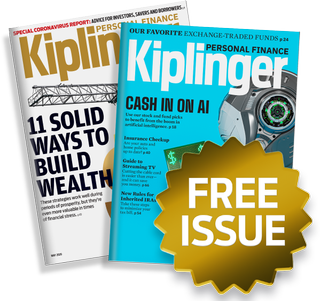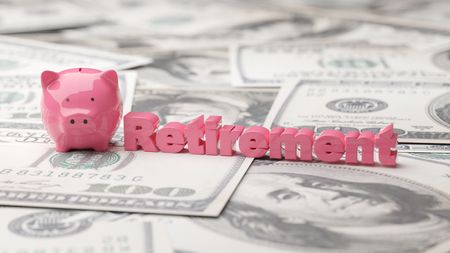How Much Are You Paying for Your Portfolio?
The difference between an expense ratio of 0.66% and 0.08% may not sound like much, but it can easily mean thousands of dollars lost to fees and expenses over the course of a decade.


The greatest value financial advisers offer is the quality of their advice, the way they help their clients manage their emotions and their investment intelligence. Their next greatest value? Helping to reduce internal investment costs without negatively impacting portfolio returns.
Over the past 20 years the financial services industry has experienced a boom in product innovation. Many of these developments provide investors with the ability to greatly improve their long-term performance simply by cutting underlying investment costs. For instance, if you own a large-cap U.S. stock mutual fund, odds are you are paying roughly 1% in internal expenses plus hidden trading costs for the fund … and you may be subject to considerable dividend and capital gains distributions, further reducing your net after-tax return. If, however, you owned any one of the large-cap ETFs (exchange traded funds) that has similar holdings and portfolio characteristics, you would be cutting your internal expenses by over 0.75% while essentially owning the same portfolio.
For illustration purposes, take the Growth Fund of America (ticker: AGTHX), which has over $162 billion in assets and a very reasonable 0.66% expense ratio. This is a solid fund with a decent track record and a terrific investment for smaller accounts (below $50,000) where trading costs and other outside factors can greatly impact performance. Comparing this fund to the iShares S&P US Growth ETF (ticker: IUSG), the informed investor will quickly notice that its 0.05% expense ratio represents a much better value and significant cost savings.

Sign up for Kiplinger’s Free E-Newsletters
Profit and prosper with the best of expert advice on investing, taxes, retirement, personal finance and more - straight to your e-mail.
Profit and prosper with the best of expert advice - straight to your e-mail.
Both investments have similar return, risk and volatility patterns, which is why I chose to compare them. However, over time – say the past 10 years – the difference in expense ratios compounds significantly, costing the investor thousands of dollars. In this example, the 61 basis points savings in expenses compounded at the net return of 7% by the Growth Fund of America over a decade (according to Morningstar data) for a $100,000 investment amounts to over $13,000 in additional net returns for the investor.
As a financial professional with over 20 years portfolio management experience I have learned that there are very good reasons to own all sorts of products to implement your investment strategy. And while there are bound to be times when selecting a higher-cost investment makes absolute sense (variable annuities immediately come to mind), generally speaking investors are well served to research and select lower-cost investments.
This column is the fourth in a six-part series on investor education.
- Column 1 – Understanding your goals
- Column 2 – Why benchmarking to the S&P 500 is not a good strategy
- Column 3 – Investors: Focus on Cash Flow, Not Returns
- Column 4 – How much are you paying for your portfolio?
- Column 5 – 5 critical questions to ask your financial advisor
- Column 6 – ‘Senior Inflation’ the not so silent retirement killer
Get Kiplinger Today newsletter — free
Profit and prosper with the best of Kiplinger's advice on investing, taxes, retirement, personal finance and much more. Delivered daily. Enter your email in the box and click Sign Me Up.

Oliver Pursche is the Chief Market Strategist for Bruderman Asset Management, an SEC-registered investment advisory firm with over $1 billion in assets under management and an additional $400 million under advisement through its affiliated broker dealer, Bruderman Brothers, LLC. Pursche is a recognized authority on global affairs and investment policy, as well as a regular contributor on CNBC, Bloomberg and Fox Business. Additionally, he is a monthly contributing columnist for Forbes and Kiplinger.com, a member of the Harvard Business Review Advisory Council and a monthly participant of the NY Federal Reserve Bank Business Leaders Survey, and the author of "Immigrants: The Economic Force at our Door."
-
 Why Does the Fed Prefer PCE Over CPI?
Why Does the Fed Prefer PCE Over CPI?Inflation has been top of mind for lots of folks in recent years. Most of Wall Street follows the CPI but the Fed favors the PCE. Here's why.
By Charles Lewis Sizemore, CFA Published
-
 Five Great Places to Live in Wyoming
Five Great Places to Live in WyomingWhether you prefer the buzzy affluence of Jackson Hole, rodeo towns or mountain towns, Wyoming should be on any nature lover’s list.
By Drew Limsky Published
-
 How to Age-Proof Your Retirement Plan
How to Age-Proof Your Retirement PlanLongevity risk is a big threat to your retirement, but there are several strategies to protect yourself from running out of money, no matter how long you live.
By Nico Pesci Published
-
 Retirement Planning for Couples With a Generation Gap
Retirement Planning for Couples With a Generation GapDo you and your partner have different retirement timelines and attitudes to saving? It is possible to make plans together. This is how one couple did it.
By Phil Wright, Certified Fund Specialist Published
-
 Q1 Post-Mortem: The Market Shifts You Don't Want to Ignore
Q1 Post-Mortem: The Market Shifts You Don't Want to IgnoreAs the second quarter gets underway, here are some takeaways from the market's first-quarter performance to consider as you make your investment decisions.
By Prem Patel, MBA, IAR Published
-
 How to Replace a Corporate Trustee (and Make Other Trust Changes)
How to Replace a Corporate Trustee (and Make Other Trust Changes)The right choice of trustee today may not be the right choice for trust beneficiaries in the future. Here's what you should know.
By Christopher F. Tate, J.D. Published
-
 How to Balance Your Insurance Expectations vs the Reality
How to Balance Your Insurance Expectations vs the RealityJust because you have an insurance policy doesn't mean that you're totally covered in the event something bad happens.
By Karl Susman, CPCU, LUTCF, CIC, CSFP, CFS, CPIA, AAI-M, PLCS Published
-
 How Building Liquidity Into Your Retirement Plan Can Pay Off
How Building Liquidity Into Your Retirement Plan Can Pay OffTo succeed in investing for retirement, you need time and discipline — liquidity can give you both.
By Samantha Compton, IAR Published
-
 Striking Oil in Opportunity Zones: Now Might Be the Best Time to Invest
Striking Oil in Opportunity Zones: Now Might Be the Best Time to InvestYou could unlock hidden wealth in QOZs with strategic oil and gas investments, potentially combining tax advantages with long-term growth in an essential industry.
By Daniel Goodwin Published
-
 What You Don't Know About Annuities Can Hurt You
What You Don't Know About Annuities Can Hurt YouLack of awareness leads many to overlook these potent financial tools, and with the possibility of running out of money in retirement, that could really hurt.
By Ken Nuss Published